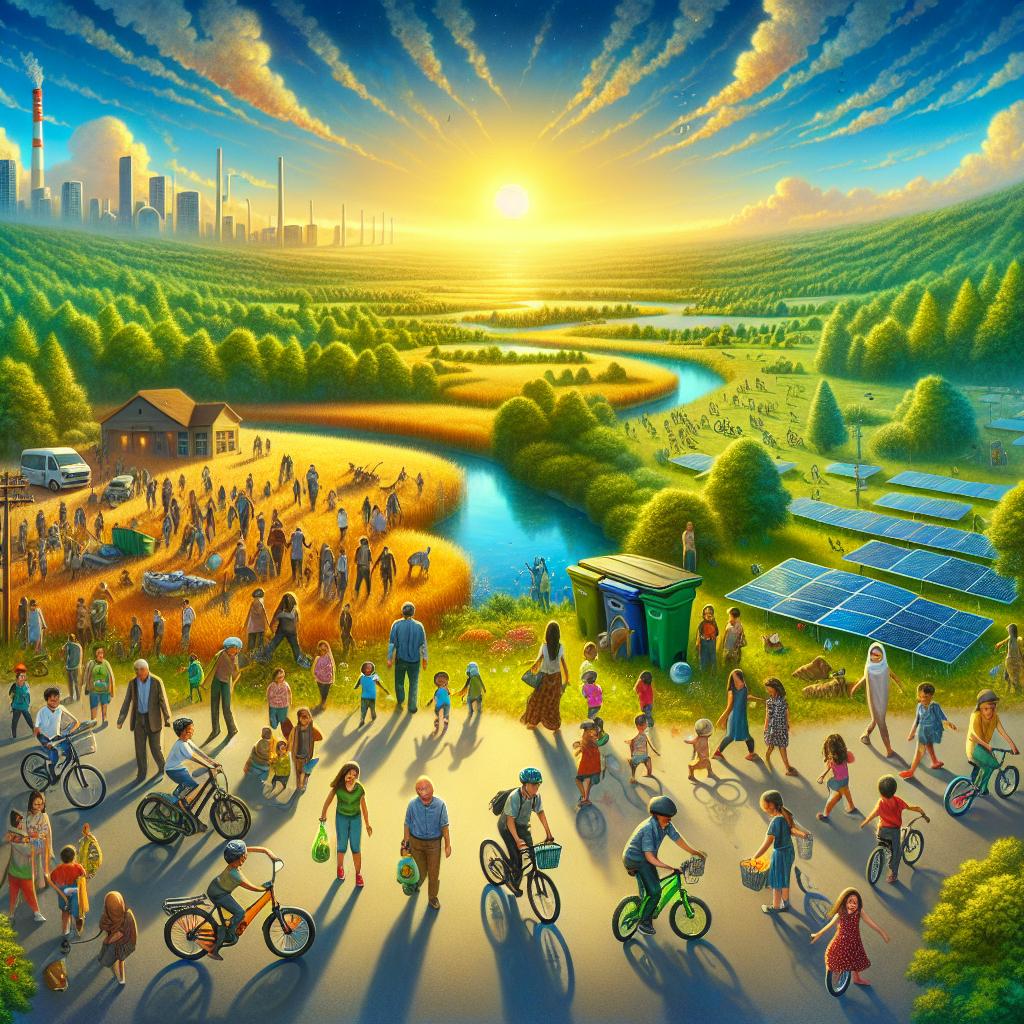Sustainable solutions

Introduction:
In an era marked by increasing environmental awareness and concerns over climate change, the need for sustainable solutions has never been more pressing. From green transportation to waste management, climate adaptation, wildlife conservation, energy efficiency, restoration, and climate action, numerous initiatives are being taken to reduce our carbon footprint and create a more sustainable future for all. In this article, we'll explore some of the most inspiring advancements in these areas.
Green Transportation:
The transportation sector is one of the largest contributors to greenhouse gas emissions. However, the rise of electric vehicles (EVs) has brought a ray of hope. According to a report by the International Energy Agency (IEA), electric vehicles could account for 58% of passenger car sales by 2040. Companies like Tesla, Nissan, and Volkswagen are leading the charge, offering increasingly affordable and efficient electric cars. Additionally, the development of hydrogen fuel cell technology promises zero-emission heavy-duty vehicles, such as trucks and buses.
Waste Management:
Another significant contributor to greenhouse gas emissions is the waste management sector. However, advancements in circular economy principles and recycling technologies are helping reduce waste and minimize emissions. For instance, companies like TerraCycle are pioneering the use of recycled ocean plastic in everyday products, while Coca-Cola has committed to collecting and recycling the equivalent of every bottle or can it sells by 2030. Furthermore, advances in biodegradable and compostable materials, such as those made from plant-based plastics, can help reduce the amount of waste that ends up in landfills and oceans.
Climate Adaptation:
As the effects of climate change become more apparent, it's crucial that we adapt to the changing environment. One such adaptation is the development of green infrastructure, such as green roofs, permeable pavements, and rain gardens. These measures help reduce the urban heat island effect, mitigate the impacts of heavy rainfall, and provide habitats for urban wildlife. Additionally, the use of renewable energy sources, such as solar panels and wind turbines, can help communities become more resilient to power outages and extreme weather events.
Wildlife Conservation:
The loss of wildlife habitats and the extinction of countless species are major concerns as the human population grows and encroaches on natural habitats. However, various initiatives are being taken to address these issues. For instance, the World Wildlife Fund (WWF) has launched the Forests Forward campaign, which aims to protect and restore forests that are critical for wildlife and carbon storage. Additionally, the use of wildlife corridors and the creation of protected areas can help ensure the survival of many endangered species.
Energy Efficiency:
Energy efficiency remains a crucial component of any sustainable future. Advancements in energy-efficient technologies, such as LED lighting, smart grids, and energy storage systems, are helping reduce energy consumption and minimize greenhouse gas emissions. Furthermore, the widespread adoption of renewable energy sources, such as solar, wind, and hydro power, is enabling communities and countries to become more energy-independent and reduce their reliance on fossil fuels.
Restoration:
Restoration projects, such as reforestation and wetland restoration, are essential for mitigating the impacts of human activities on the environment. For instance, the Bonn Challenge aims to restore 350 million hectares of degraded and deforested land by 2030. Additionally, the restoration of wetlands, which act as carbon sinks and provide vital habitats for various species, can help reduce the impacts of climate change and support biodiversity.
Climate Action:
Finally, it's important to remember that climate action starts with each and every one of us. Initiatives like the Paris Agreement, which aims to limit global warming to well below 2 degrees Celsius above pre-industrial levels, are crucial for driving global efforts to address climate change. However, individual actions, such as reducing energy consumption, using public transportation or carpooling, and supporting sustainable businesses, can also make a significant impact.
Conclusion:
In conclusion, the advancements in green transportation, waste management, climate adaptation, wildlife conservation, energy efficiency, restoration, and climate action offer a glimmer of hope for a more sustainable future. By continuing to invest in and support these initiatives, we can help reduce our carbon footprint, mitigate the impacts of climate change, and safeguard the planet for future generations.




